West Virginia Landowners & FFCP Tackle Invasive Species
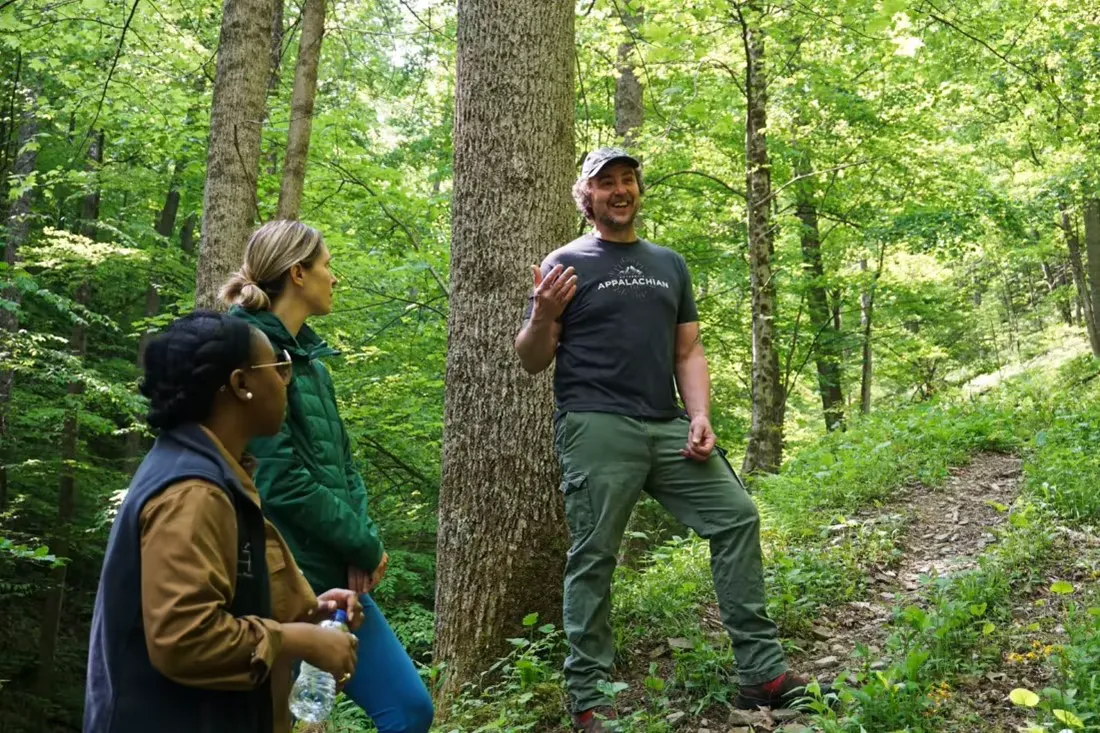
Ed Kachmarek has been able to reduce the population of invasive species in his woodlands by enrolling in the Family Forest Carbon Program from the American Forest Foundation.
In May 2023, American Forest Foundation staff had the opportunity to visit the properties of West Virginian landowners enrolled in the Family Forest Carbon Program (FFCP). Ed Kachmarek and his wife Dianna. Ed and Dianna are the proud owners of 63 forested acres in Randolph County, West Virginia. We visited their property to hear their story and the history of this land. We also talked about how FFCP will reduce invasive species populations and support old forest growth to benefit their family and the health of the forest in the years to come. Originally small business owners from Pennsylvania, Ed and Dianna moved to West Virginia to rediscover their love for the outdoors and be closer to nature. They sold their business, and for the past twenty years, they’ve built a life in their West Virginia home.
Tucked in the Allegheny Highlands, bordering Monongahela National Forest, Ed and Dianna’s home is a dream for outdoor enthusiasts. They have access to popular hiking destinations like Dolly Sods and Seneca Rocks, incredible fly fishing, and right in their backyard are acres upon acres of lush temperate deciduous forest ripe for discovery.
The history of this land is vastly different from what it is today. When they first purchased the property, Ed was given a timber sale prospectus showing how many trees were logged in the past. Unfortunately, the previous owner had high-graded nearly 900 of the best trees on the property a few months before making the sale, including some native chestnut oak, yellow poplar and maple species. As we hiked up the property, Ed showed us where parts of the mountain were bulldozed to make way for heavy machinery and logging roads.
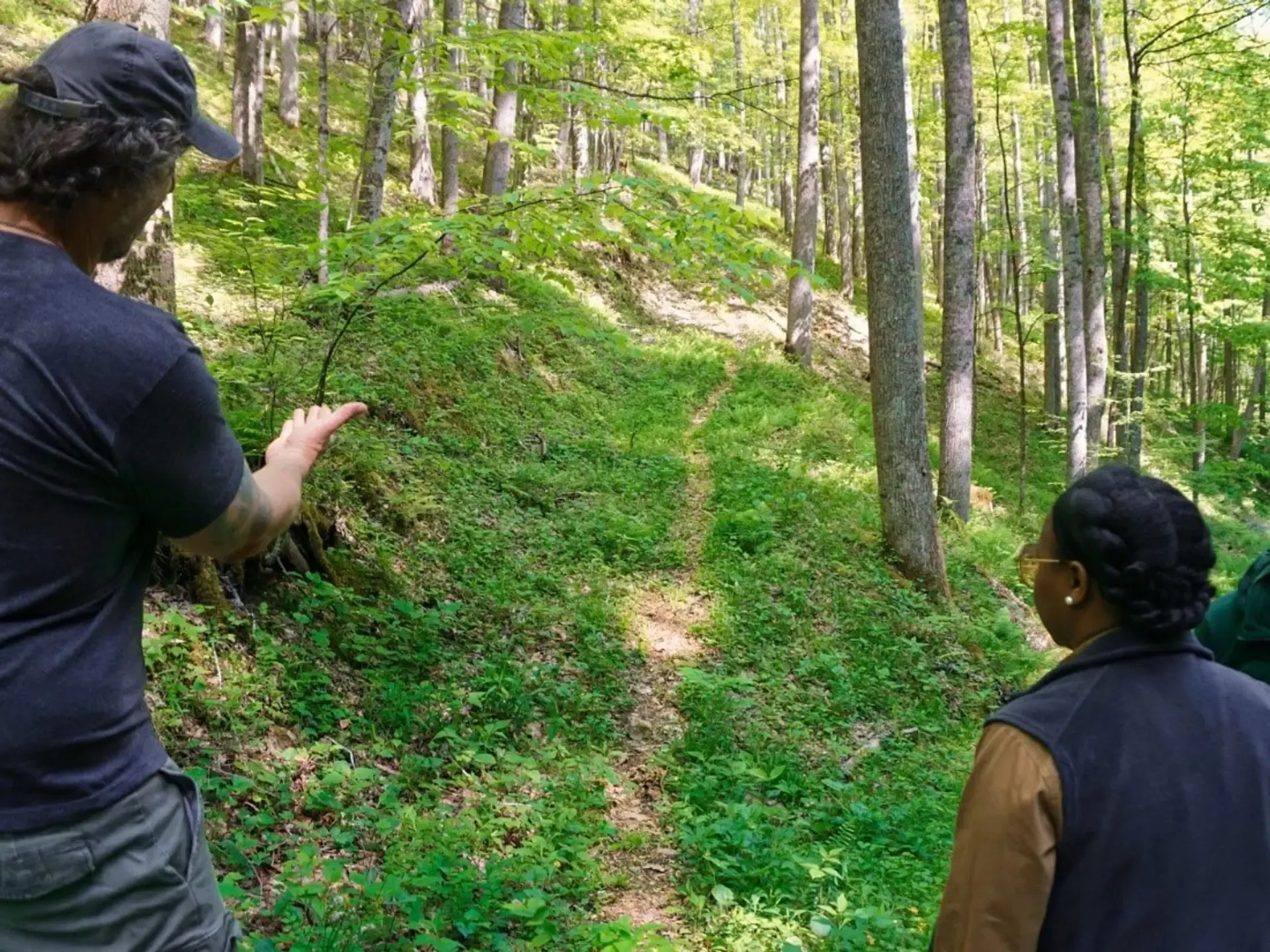
Ed Kachmarek showing AFF staff around his woodland property. Trails run through his forest where logging roads used to exist.
Ed and Dianna are passionate about returning the land to its native state, but it hasn’t been easy. Besides the past logging, invasive multiflora rose and Japanese barberry have kept Ed consistently busy fighting an uphill battle. Five days a week, Ed hikes up the property carrying a shovel and gardening shears to trim the invasives as they continue to grow. As their property borders Monongahela National Forest, invasive plant species will often grow unbothered on the federal land before sprawling onto their property. The multiflora rose spreads aggressively against competing native vegetation and inhibits the development of native trees, shrubs, and grasses. Japanese barberry compounds this effect, altering the soil composition and pH to be more nitrogenous. This further inhibits native species from growing and accelerates the rate at which barberry spreads. Barberry also hosts other pests, such as ticks which may carry and spread Lyme disease. Ed was approached by other carbon programs before coming across the Family Forest Carbon Program in a local newspaper ad. It didn’t take long for him to decide to enroll. Other programs were too stringent, offering contract lengths that were too long or terms that were too restrictive. The Family Forest Carbon Program was a better fit as it had a shorter contract length and the flexibility to allow for some timber harvesting, which Ed appreciates when gathering firewood for the winter.
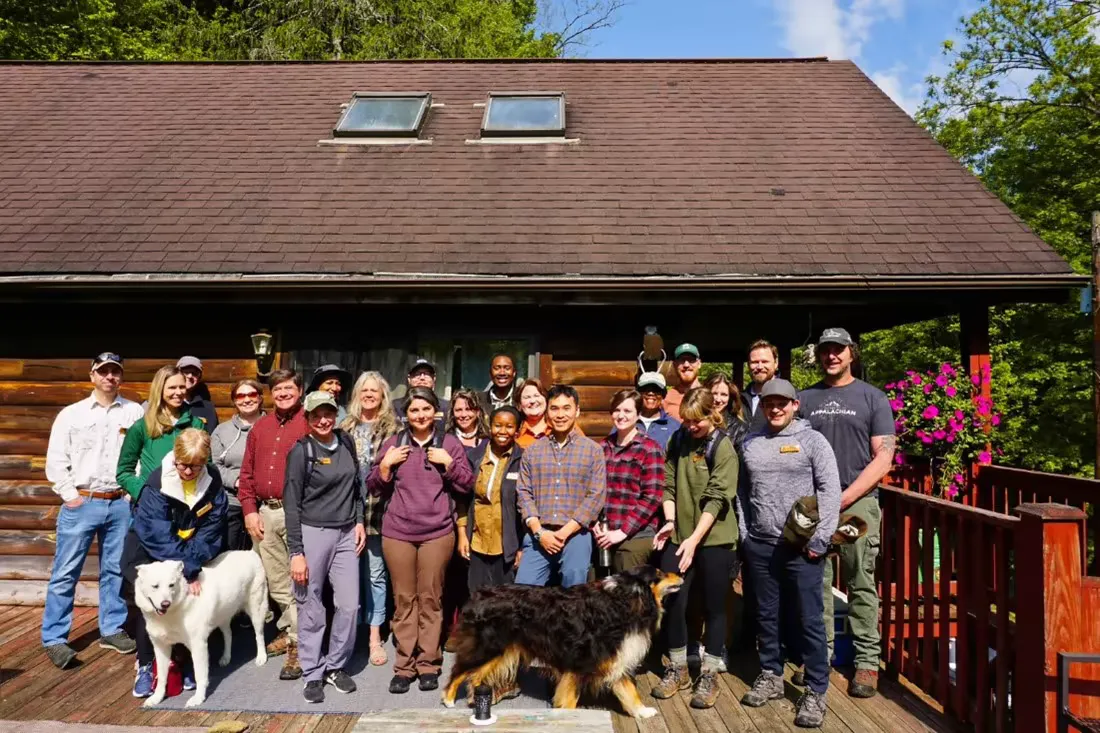
Staffers from the American Forest Foundation stand with the Kachmarek family, and their two dogs, on their back porch. The home and porch overlook the family's woodlands.
With the Family Forest Carbon Program, Ed and Dianna have both financial and technical support in their mission to combat invasive species and restore the native landscape. They’ll be provided with a complimentary forest management plan as part of their enrollment, along with access to a growing network of local and consulting foresters to provide technical expertise on how to manage their land. Plus, annual payments from the program will help cover the cost of new equipment for Ed’s ongoing fight against invasive species.
Over time, Ed and Dianna hope to start planting more native species to replace invasive ones. They hope to grow milkweed to attract monarch butterflies to their property and to restore their populations across West Virginia. With the flexibility of the Family Forest Carbon Program Ed and Dianna can accomplish their personal goals for their land while also capturing and storing more carbon in their forest. By implementing sustainable forest practices recommended in their forest management plan focused, Ed and Dianna will improve their land in many ways and ensure that they can enjoy the outdoor recreation and natural values that their land provides for years to come.
Related Articles
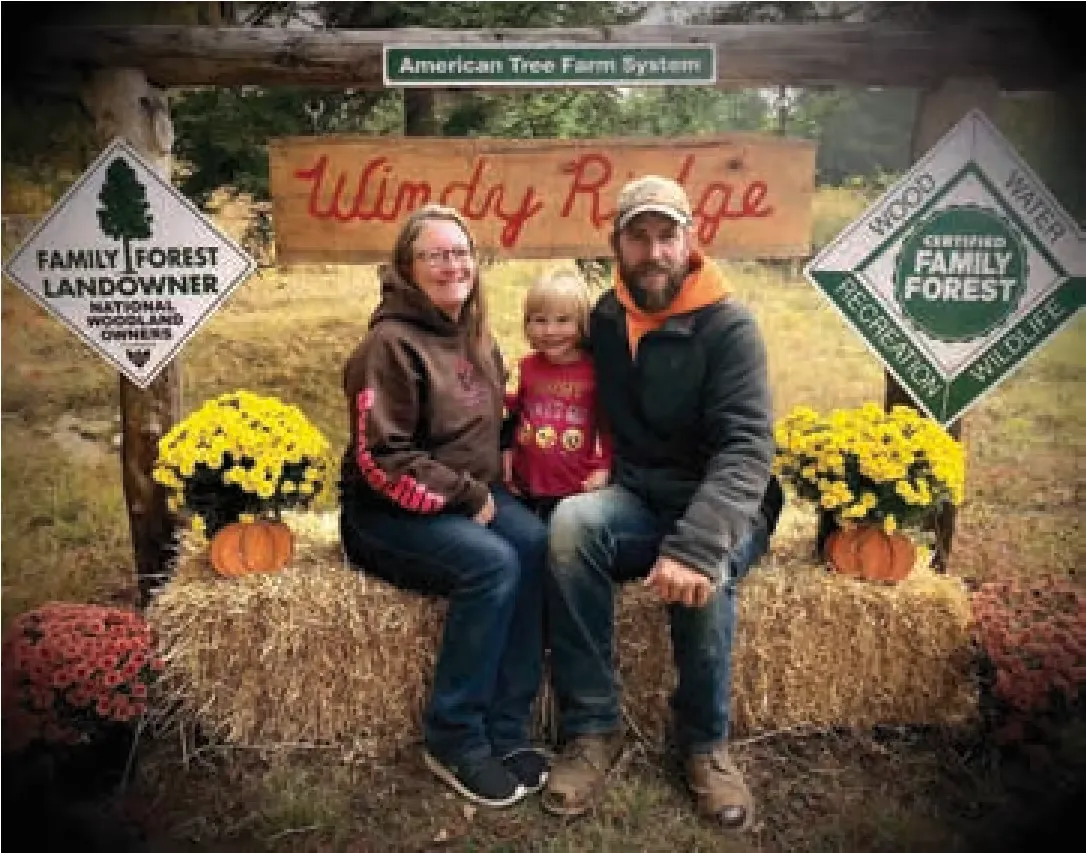
August 4, 2023
Carbon Program Assists a Family’s West Virginia Tree Farm
Jeremy Brubeck recalls sitting in a deer stand at dawn on his family’s 143-acre woodland property. “As the sun came up, I remember watching the forest come alive.”
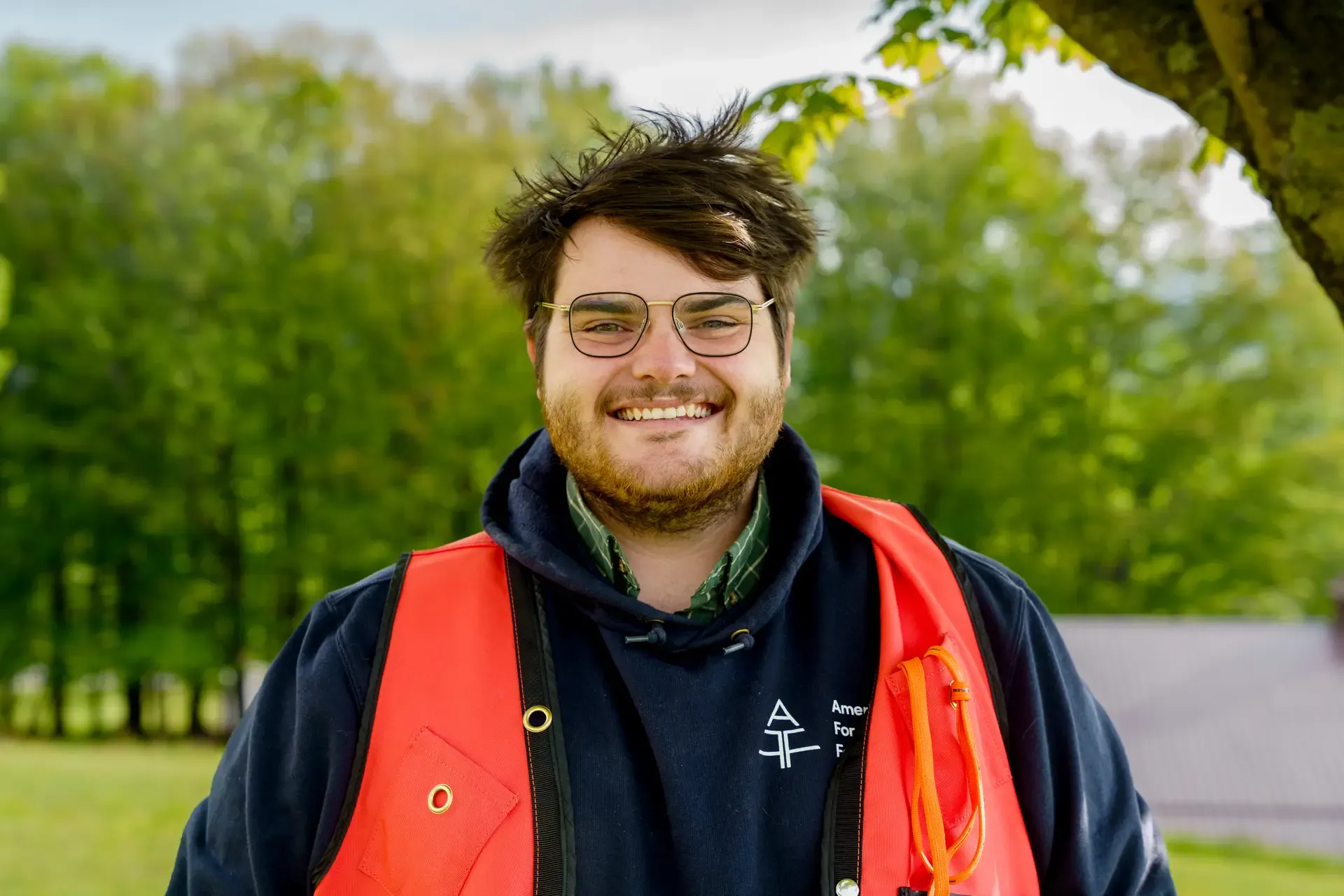
July 18, 2023
Forester Spotlight: Tristan Kinnison
Next up in our Family Forest Carbon Program forester series is Tristan Kinnison, based in Athens, OH. Tristan works with landowners in Ohio and West Virginia, and is an ISA Certified Arborist with a Bachelor of Science in Wildlife and Conservation Biology.
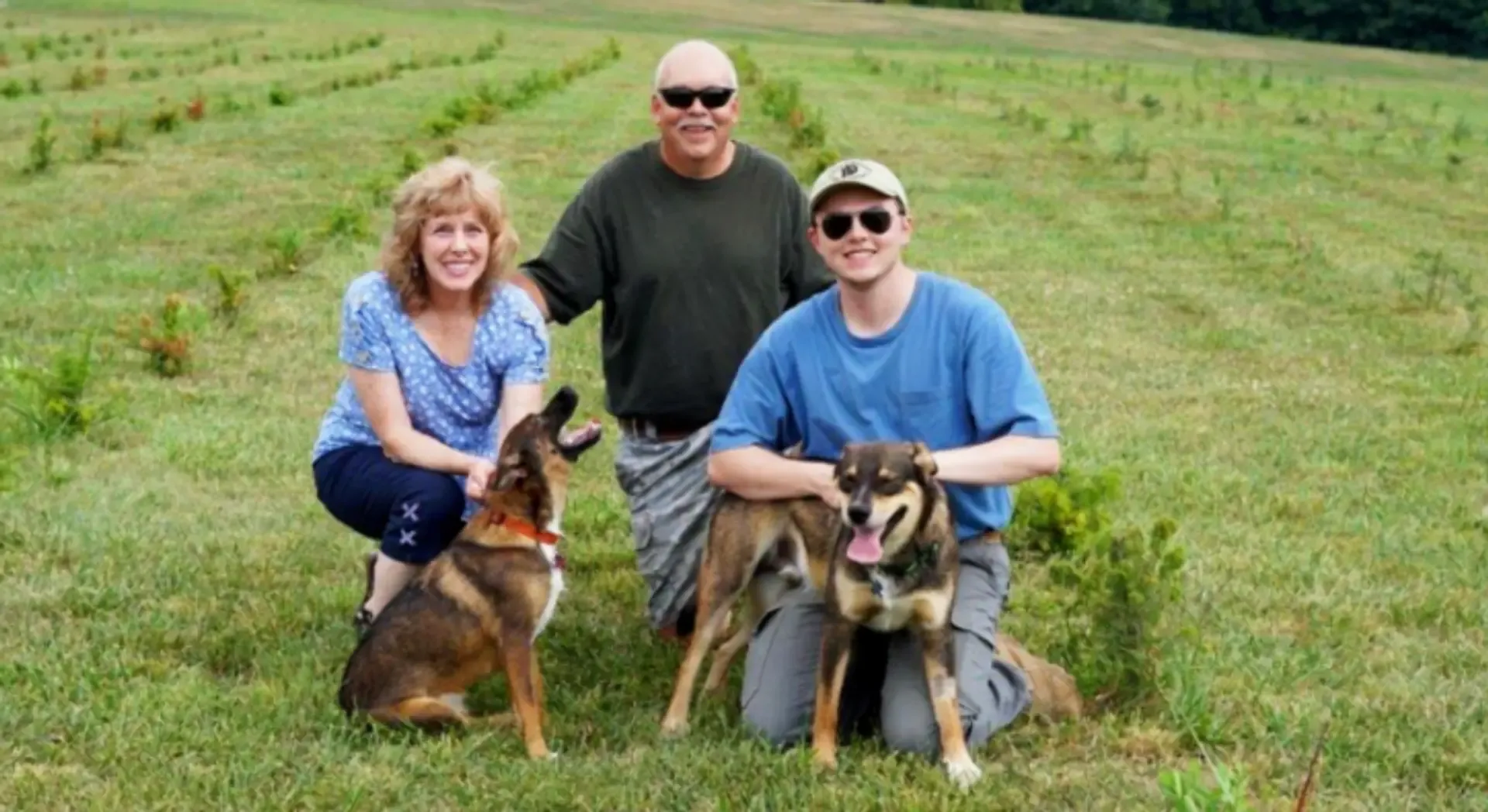
November 17, 2022
Maryland Landowner Sees the Potential in His Land
Bryce Trezise, a Maryland landowner enrolled in the American Forest Foundation's Family Forest Carbon Program, recently shared his story with our partners at U.S. Nature4Climate.